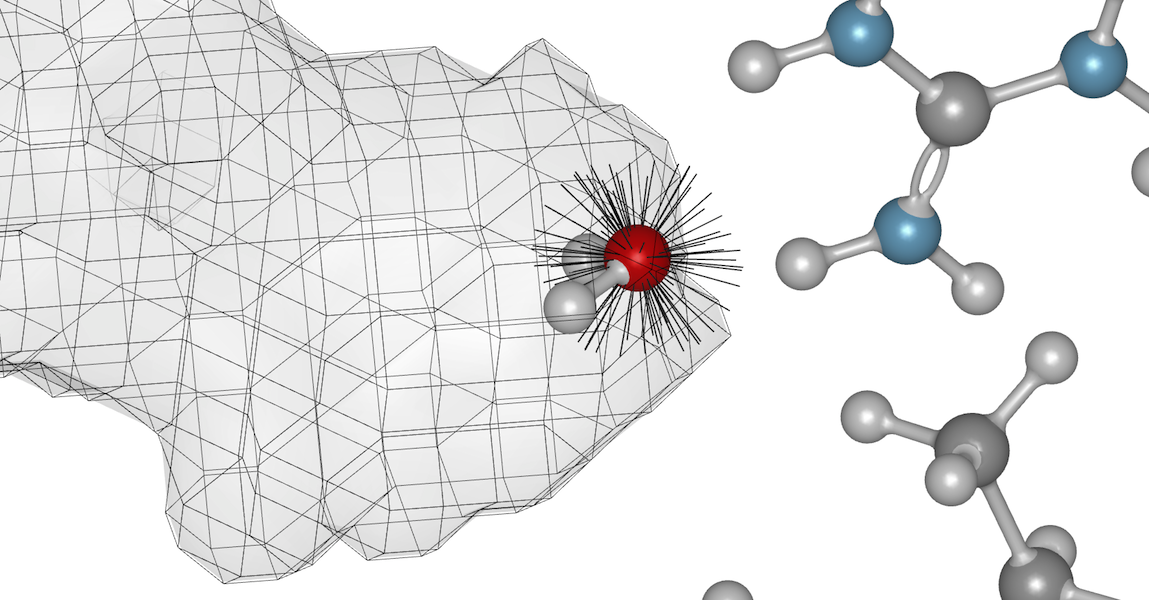Overview¶

Semi-continuum Solvation¶
The SZMAP application analyzes sites near the surface of a protein or ligand using semi-continuum solvation theory, which combines a single explicit probe water with Poisson-Boltzmann continuum theory. By sampling various probe water orientations as it interacts with continuum solvent and with protein and ligand molecules, SZMAP can estimate thermodynamic properties useful in understanding the solvent role in ligand binding. One of the advantages of this semi-continuum approach is that SZMAP can place the probe anywhere one wishes to analyze, even locations that molecular dynamics simulations may not be able to sample adequately. The Technical Details section of chapter Technical Details describes how these values are computed.
The most important question SZMAP can address is whether displacing water in a given region of a binding site is likely to increase or decrease binding affinity. A related question is what to replace a water with once the decision has been made to displace it. And finally, there is the question of whether water sites can be made to contribute to binding affinity without being displaced.
The analysis section of the SZMAP Workflow goes through how to determine whether a site is a good candidate for solvent replacement by looking at apo, complex and stabilization results. It also touches on questions of what to replace water with by looking at difference free energies, probe water orientations and GamePlan results.
In addition to being run directly, SZMAP is called indirectly by GamePlan. The SZMAP results are analyzed to produce hypotheses for ways to optimize the ligand, showing specific substituent geometries based on water energetics.